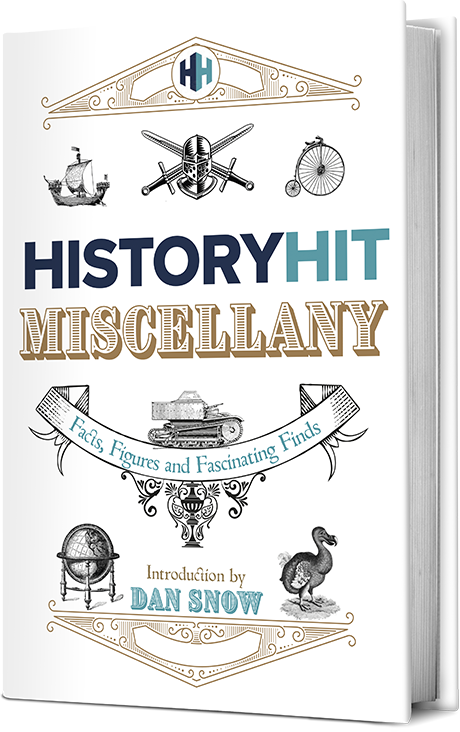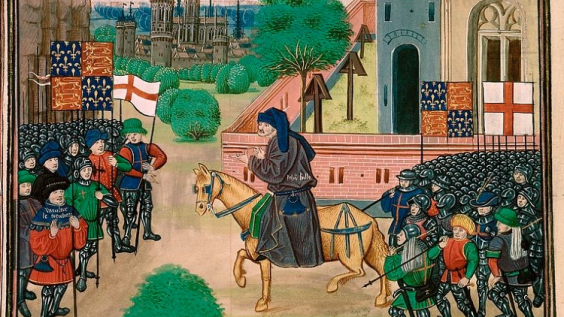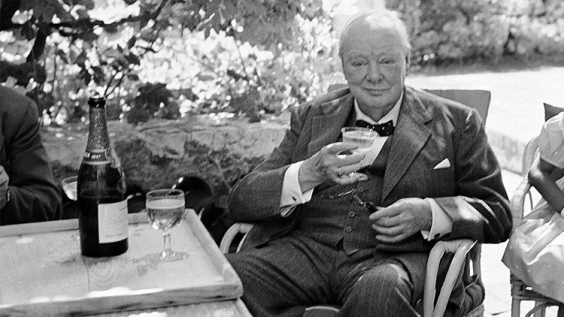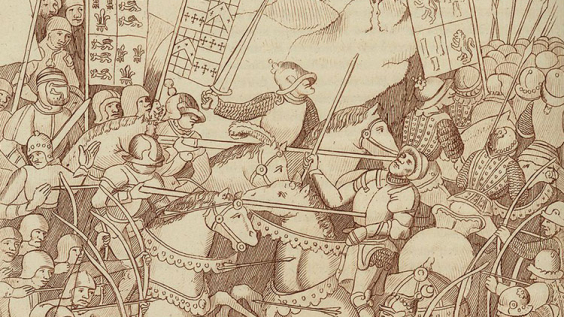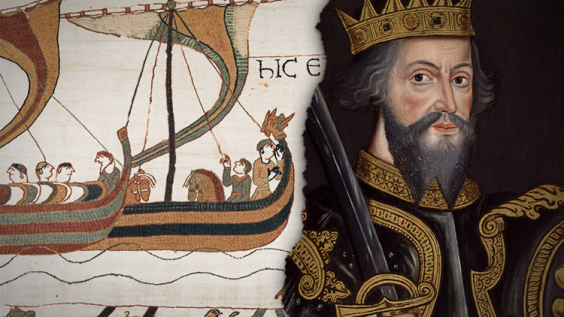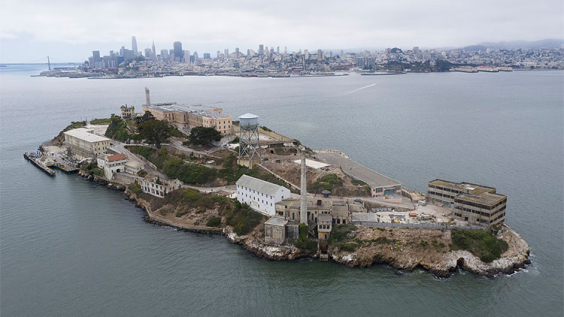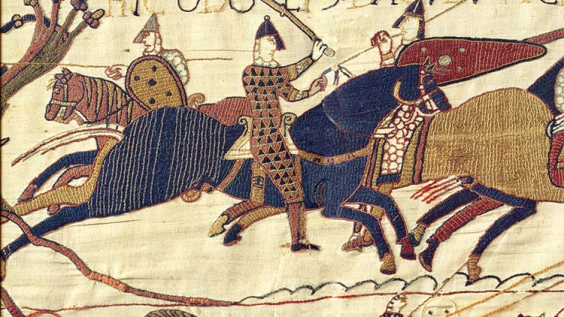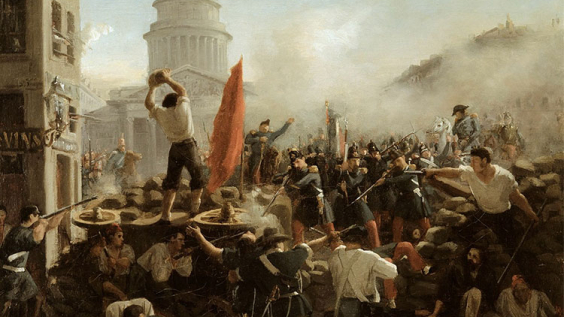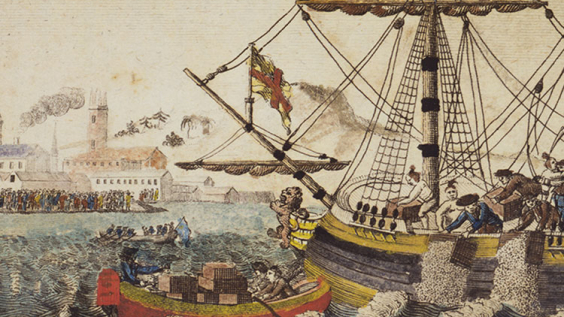This educational video is a visual version of this article and presented by Artificial Intelligence (AI). Please see our AI ethics and diversity policy for more information on how we use AI and select presenters on our website.
The Industrial Revolution (c.1760-1840) introduced many new inventions that would change the world forever.
It was a time epitomised by the wide scale introduction of machinery, the transformation of cities and significant technological developments in a wide range of areas. Many modern mechanisms have their origins from this period.
Here are ten key inventions during the Industrial Revolution.
1. Spinning Jenny
The ‘Spinning Jenny’ was an engine for spinning wool or cotton invented in 1764 by James Hargreaves, who had it patented in 1770.
Able to be operated by unskilled workers, it was a key development in the industrialisation of weaving, as it could spin many spindles at a time, beginning with eight at a time and increasing to eighty as the technology improved.
The weaving of cloth was now no longer centred in the homes of textile workers, moving from a ‘cottage industry’ to industrial manufacture.

This illustration represents The Spinning Jenny which is a multi spindle spinning frame
Image Credit: Morphart Creation / Shutterstock.com
2. Newcomen steam engine
In 1712, Thomas Newcomen invented the first steam engine, known as the atmospheric engine. It was used predominantly to pump water out from coal mines, allowing the miners to dig further down.
The engine burned coal to create steam which operated the steam pump, pushing a movable piston. It was made in its hundreds throughout the 18th century,
This was an improvement on a crude steam powered machine built by fellow Englishman, Thomas Savery, whose 1698 machine had no moving parts.
It was, however, still dreadfully inefficient; it required huge amounts of coal to function. Newcomens’ design would be improved by James Watt during the latter half of the century.
3. Watt steam engine
Scottish engineer James Watt invented the first practical steam engine in 1763. Watt’s engine was very similar to Newcomen’s, but it was nearly twice as efficient as it required less fuel to run. This more fuel efficient design translated into huge monetary savings for the industry and Newcomens’ original atmospheric steam engines were later converted to Watts’ new design.
It was introduced commercially in 1776 and became the basis for future developments that saw the steam engine become the main source of power for a large variety of British industries.
 Listen Now
Listen Now4. The locomotive
The first recorded steam railway journey took place on 21 February 1804, when Cornishman Richard Trevithick’s ‘Pen-y-Darren’ locomotive carried ten tons of iron, five wagons and seventy men the 9.75 miles from the ironworks at Penydarren to the Merthyr-Cardiff Canal in four hours and five minutes. The journey had an average speed of c. 2.4 mph.
Twenty five years later, George Stephenson and his son, Robert Stephenson, designed ‘Stephenson’s Rocket’.
This was the most advanced locomotive of its day, winning the 1829 Rainhill trials as the only one of five entrants to complete the one mile track in Lancashire. The trials had been put on to test the argument that locomotives provided the best propulsion for the new Liverpool and Manchester Railway.
The Rocket’s design – with its smoke chimney at the front and a separate fire box in the rear – became the template for steam locomotives for the next 150 years.
5. Telegraph communications
On 25 July 1837 Sir William Fothergill Cooke and Charles Wheatstone successfully demonstrated the first electrical telegraph, installed between Euston and Camden Town in London.
The next year they installed the system along thirteen miles of Great Western Railway (from Paddington to West Drayton). It was the first commercial telegraph in the world.
In America, the first telegraph service opened in 1844 when telegraph wires connected Baltimore and Washington D.C.
One of the main figures behind the invention of the telegraph was the American Samuel Morse, who also went on to develop Morse Code to allow the easier transmission of messages across telegraph lines; it is still used to this day.

Woman sending Morse code using a telegraph
Image Credit: Everett Collection / Shutterstock.com
6. Dynamite
Dynamite was invented by Alfred Nobel, a Swedish chemist, in the 1860s.
Prior to its invention, gunpowder (called black powder) had been used to shatter rocks and fortifications. Dynamite, however, proved stronger and safer, quickly gaining widespread use.
Alfred called his new invention dynamite, after the ancient Greek word ‘dunamis’, meaning ‘power.’ He did not want it to be used for military purposes but, as we all know, the explosive was soon embraced by armies across the world
7. The photograph
In 1826, French inventor Joseph Nicéphore Niépce created the first permanent photograph from a camera image.
Niépce captured the photograph from his upstairs window using a camera obscura, a primitive camera, and a pewter plate, having experimented with various light-sensitive materials.
This, the earliest surviving photograph of a real-world scene, depicts a view of Niépce’s estate in Burgundy, France.
8. The typewriter
In 1829 William Burt, an American inventor, patented the first typewriter which he called a ‘typographer’.
It was dreadfully ineffective (proving slower to use than writing something out by hand), but Burt is nonetheless regarded as the ‘father of the typewriter’. The working model of the ‘typographer’, which Burt had left with the U.S. Patent Office, was destroyed in a fire which demolished the building in 1836.
Only 38 years later, in 1867, the first modern typewriter was invented by Christopher Latham Sholes.

Woman seated with an Underwood typewriter
Image Credit: US Library of Congress
This typewriter, patented in 1868, featured a keyboard with keys arranged in alphabetical order, which made the letters easy to find but had two disadvantages. The most used letters were not easy to reach, and hitting neighbouring keys in rapid succession caused the machine to jam.
Sholes consequently developed the first QWERTY keyboard (named after the first 6 letters of its first line) in 1872.
9. The electric generator
The first electric generator was invented by Michael Faraday in 1831: the Faraday Disk.
Although the machine’s design was not very effective, Faraday’s experimentation with electromagnetism, including the discovery of electromagnetic induction (the production of voltage across an electrical conductor in a changing magnetic field), soon led to improvements, such as the dynamo which was the first generator capable of delivering power for industry.
10. The modern factory
With the introduction of machinery, factories began springing up first in Britain and then across the world.
There are various arguments as to the first factory. Many credit Derby’s John Lombe with his five storey red brick silk mill, completed in 1721. The man often credited with inventing the modern factory, however, is Richard Arkwright, who constructed Cromford Mill in 1771.

An old water mill wheel near Scarthin Pond, Cromford, Derbyshire. 02 May 2019
Image Credit: Scott Cobb UK / Shutterstock.com
Located in the Derwent Valley, Derbyshire, Cromford Mill was the first water-powered cotton spinning mill and initially employed 200 workers. It ran day and night with two 12-hour shifts, the gates being locked at 6am and 6pm, permitting no late arrivals.
Factories altered the face of Britain and then the world, prompting responses by writers. William Blake condemned the “dark, satanic mills”. In response to accelerated movement away from the countryside after the birth of factories, Thomas Hardy wrote about “the process, humorously designated by statisticians as ‘the tendency of the rural population towards the large towns’, being really the tendency of water to flow uphill when forced by machinery.”

